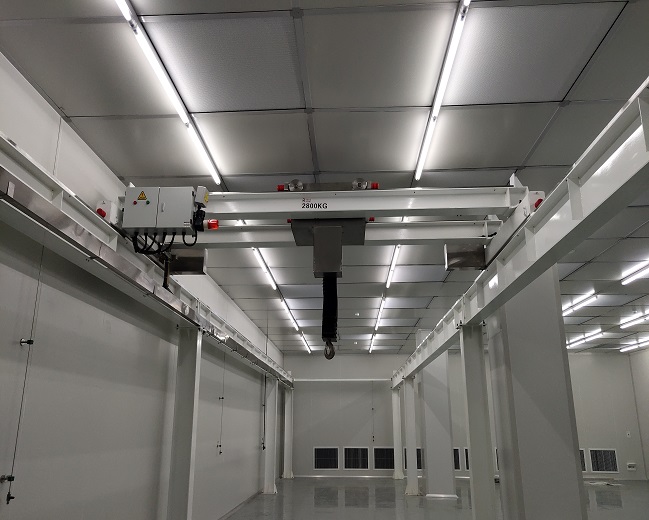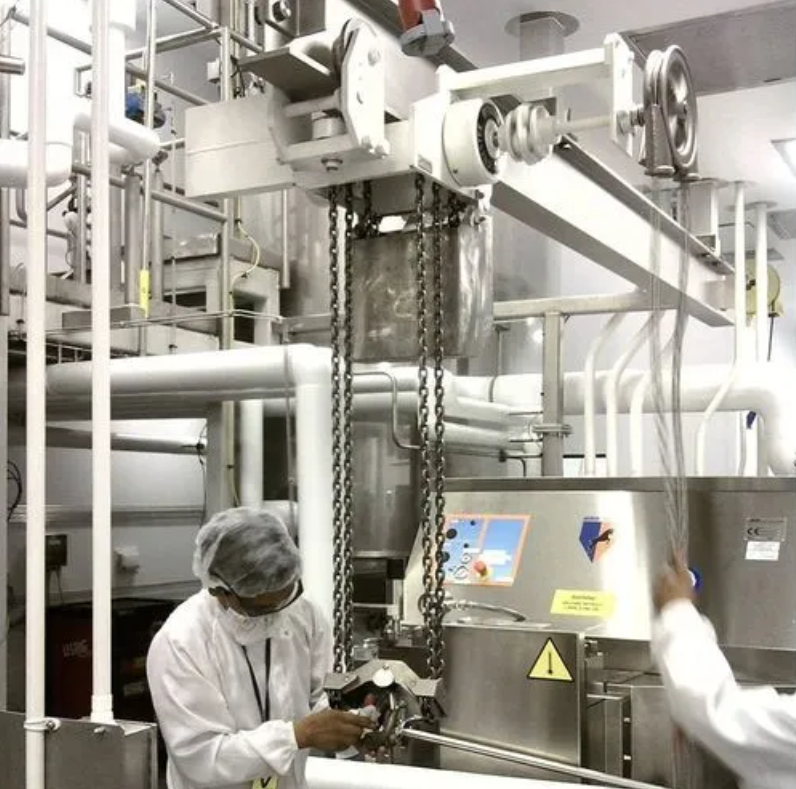Food Factory ISO Class4 Clean Room Lifting Equipment
The cleanliness level of the clean room crane is divided into ISO Class1, ISO Class2, ISO Class3, ISO Class4, ISO Class5, ISO Class6, ISO Class7, ISO Class8 and ISO Class9. It is designed, manufactured, installed, debugged, used and designed for air purification requirements under specific environmental conditions. Lifting equipment for maintenance. Realize the air purification lifting operation of precision instruments, components and other products, so as to effectively meet the air purification requirements of the clean room.

Features of the clean room crane for handling goods in the clean room:
● Use in a clean room to prevent dust from entering the interior of the device.
● With the chain hoist, the chain is not easily damaged, and the dust generated by friction is less.
● The lifting mechanism adopts a chain hoist, the chain is not easy to be damaged, and the dust generated by friction is less.
● The running mechanism adopts frequency conversion control, the starting and braking are stable, and the energy saving effect is obvious, which saves your company's energy consumption.
● The structure part of the crane adopts a single girder type, the trolley travels on the bottom of the main girder, and the main girder is fully sealed.
● The surface of the main beam is shot blasted and painted by professionals, the overall effect is smooth, and there is no paint peeling off.

Precautions for the operation of clean room cranes in food factories:
● Choose a suitable crane model: Different clean room crane models and specifications are suitable for different application scenarios and required load capacity, and should be selected according to actual needs when selecting.
● Keep the crane clean: When using a cleanroom crane, it is imperative to keep the crane itself clean. Because the crane often needs to be in contact with the product, if the crane is contaminated, it will seriously affect the cleanliness of the product.
● Use suitable hooks: When carrying out lifting operations, it is necessary to use suitable hooks. Use different hooks according to actual needs, such as: clamps, slings, flat hooks, etc. When using hooks, ensure that they are clean and free from damage. In addition, the hook should be used in strict accordance with the rated load to avoid damage to the hook due to excessive load.
● Adjust the height of the crane: The height of the clean room crane needs to be adjusted to meet the needs of different operations. When adjusting the height, it is necessary to pay attention to the adjustment of the height range to avoid collisions, which may cause damage to the crane or the suspended object. In addition, when adjusting the height, care should be taken to avoid the vibration of the crane itself, so as to reduce the pollution to the product.
● Avoid collisions during operation: When operating a clean room crane, care should be taken to avoid collisions with other equipment or items. Be vigilant during operation, foresee possible problems, and prevent collisions from causing damage to the machine or affecting the production environment.
● Safety check before opening: Before using a cleanroom crane, a safety check is required. The inspection includes: whether the wires and power supply of the crane are working properly, whether the hook is in good condition, whether the crane is defective, etc. Make sure the equipment is in good condition before proceeding to avoid potential safety risks.
● Increased equipment maintenance: Maintenance of clean room cranes is very important. Regularly inspect and maintain the equipment to ensure that the equipment is used in a near-perfect state and minimize pollution to the product.

